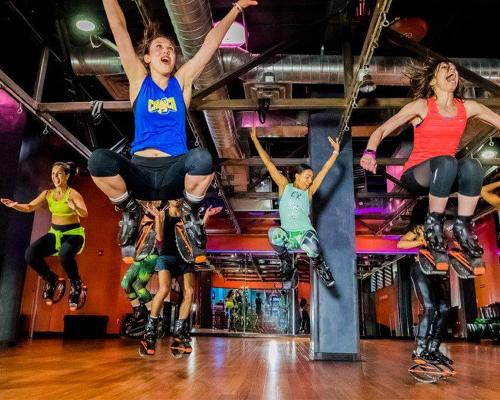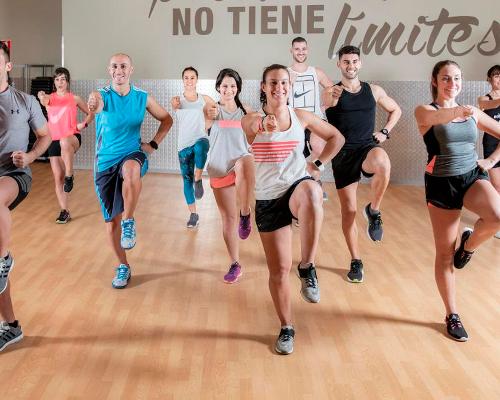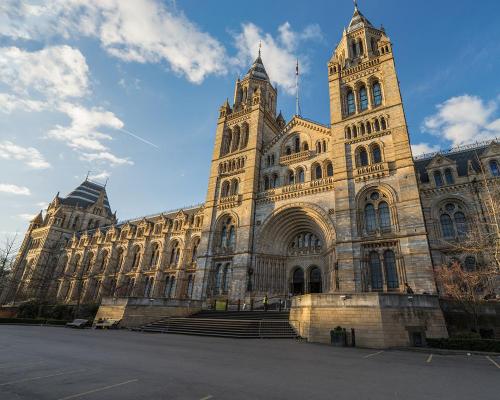see all jobs
Bounceback – new research shows 88 per cent of gym members will return and group ex will be fastest to recover
A new report has revealed the likely timescales and shape of the UK fitness market's recovery from the COVID-19 lockdown, finding that 88 per cent of users intend to return to the UK's gyms and leisure centres.
Published today (28 May), the COVID-19 Impact Report: The fitness and leisure sector’s path to recovery, examines the impact of COVID-19 on the UK's physical activity sector.
Produced by the ukactive Research Institute and 4global, the report provides a comprehensive snapshot of the sector in 2020, informed by multiple consumer and market surveys.
Utku Toprakseven, partner and director at 4global, said: “Using consumer behaviour analysis and predictive scenario modelling, we’ve mapped the recovery of the sector, taking into consideration the expected restrictions that will be placed on facilities.
“We hope this will support organisations in their planning, as well as providing evidence to demonstrate the benefit of physical activity to society as a whole.
SOURCE OF DATA
The modelling draws on millions of customer visits captured by the DataHub, alongside data points from across the wider sector, including polling from Leisure-net, Sport England and Savanta ComRes, TA6 Alliance, My Customer Lens and YouGov.
COVID-19 Impact Report: The fitness and leisure sector’s path to recovery includes detailed modelling to show the rates at which attendance could return to full capacity, based on different timelines for reopening, social distancing restrictions and also taking consumer confidence into account.
The report says 'lost visits' as a result of the pandemic could number up to 700m when the actual numbers achieved are eventually compared with the UK’s projected performance for 2020.
METHODOLOGY
As a result of disruptions this year, researchers have created comparisons between pre-COVID and post-COVID trading by using actual performance data from weeks 1-4 from 2020 and then plugging in numbers from 2019 from week 5 onwards.
For the sake of modelling post-lockdown trading, it assumes that gyms will reopen on 4 July 2020 and that they will initially be obliged to run at 50 per cent capacity.
For gyms this would mean using 50 per cent of workout stations, for studios, using half the square meterage of floor space and for pools using half the square meterage of water space.
Other constraints will see swimming lessons, team sports and attendance by the over 70s suspended.
Constraints in supply due to the 50 per cent capacity limitations will delay recovery at certain points in the growth curve, so the industry will be lobbying to ensure this effect isn't damaging for the industry.
The sooner the constraints are lifted the less likely it is to prove to be a difficulty.
If facilities were running at 50 per cent capacity for two months from 4 July and were then reopened fully on 4 September, they would be expected to regain their trading as follows:
Group exercise would get to 2019 figures +2% by 12 November 2020 (week 45 2020).
Gyms would get to 2019 figures + 1% by 5 March 2021 (week 11 2021).
Swimming would get to 2019 figures (no variance) by 19 April 2021 (week 16 2021).
Using the same model, but assuming that the 50 per cent capacity restrictions stay in place for three months (taking us to 4 October), the final recovery dates would remain the same, as researchers anticipate that the demand growth curve would be steeper, ending up at the same point.
If the 50 per cent restrictions remain in place for six months and are not lifted until 4 January 2021, the growth curve would be steeper still.
In this scenario, researchers expect:
Group exercise to recover to 2019 figures +2% by 15 February (week 7 2021).
Gyms to recover to 2019 figures + 1% by the same date as in the other scenarios – 5 March (week 11 2021).
Swimming to bounce back to 2019 figures by 19 April (week 16 2021).
Given the similarity in bounceback times for gym and swimming, researchers say that for operators considering delaying opening, the main disadvantage would be lost trading during the closures, with final recovery dates being broadly similar.
4Global was projecting six per cent growth for the UK fitness market in 2020 before the pandemic, and trading in January was on track to achieve this.
Researchers have not yet announced how long it will take the industry to get back to these projected pre-pandemic 2020 levels.
RECOVERY TIME BY ACTIVITY
Group exercise shows the greatest resilience, being the first to recover in all scenarios. In the two- and three-month restrictions scenario, group exercise is expected to regain capacity in five weeks and three days.
A six month constrained trading environment would see it regaining 2019 levels + 2% in slightly less time, at four weeks and four days.
The gym is the next fastest to recover, at 26 weeks (in both two- and three-month restriction scenarios), and in eight weeks if restrictions continue until January 4th.
Swimming is slower in all scenarios at 32 weeks for both the two and three month restricted scenarios and 15 weeks if restrictions continue until January 4th.
Researchers expect capacity to begin to restrict performance as customer confidence grows and suggest some operators could speed up their recovery through increasing capacity by redeploying under-utilised space or time slots.
The modelling considers a consumer confidence factor, derived from survey results, to account for customers who will not want to return to a gym environment straight away.
“We know that the choices made by operators over the coming months will determine how well our sector recovers from the losses experienced during lockdown,” said Lizzie Broughton, senior insight manager at ukactive. “You cannot overestimate the importance of business intelligence and data modelling at this time, so the ukactive Research Institute will continue to work with the sector to provide up-to-date insight and guidance throughout and beyond this period.”
The report will be updated regularly in line with changes to conditions and restrictions and is available now on the ukactive COVID-19 hub.
More News
- News by sector (all)
- All news
- Fitness
- Personal trainer
- Sport
- Spa
- Swimming
- Hospitality
- Entertainment & Gaming
- Commercial Leisure
- Property
- Architecture
- Design
- Tourism
- Travel
- Attractions
- Theme & Water Parks
- Arts & Culture
- Heritage & Museums
- Parks & Countryside
- Sales & Marketing
- Public Sector
- Training
- People
- Executive
- Apprenticeships
- Suppliers















































